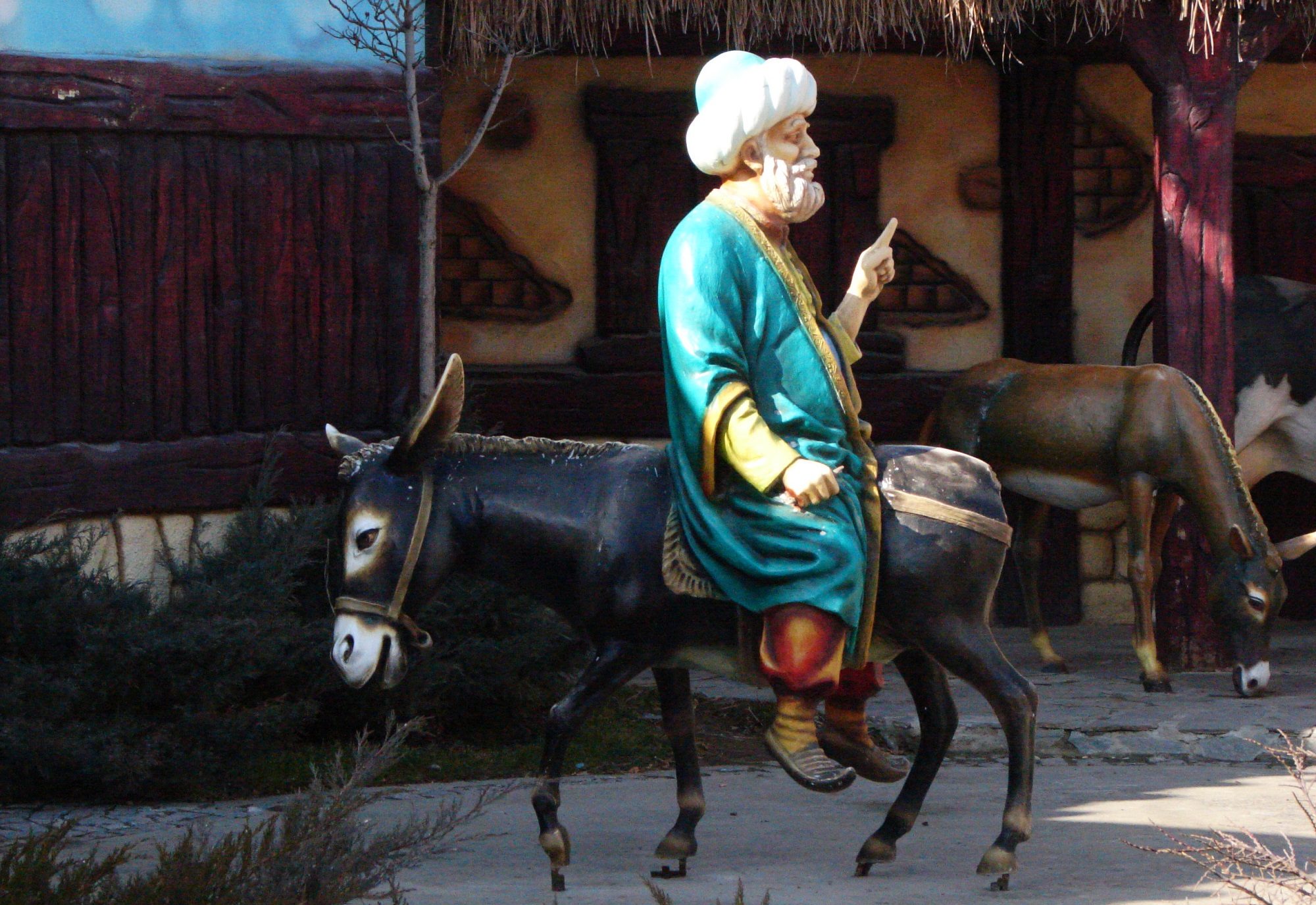Nasrettin Hoca in Turkish culture and the world of literature is one of the most important heroes of popular humour. Thousands of stories and tales full of wisdom mixed with lightness of blood that no one competes with him are told about him, and his humor that continues to amuse and delight people and draw a smile on their faces.
In this topic, we will talk about the fact that this beloved character of adults and children is a myth or reality.
Historical & Heritage Origins
In order to answer this question, it is necessary to return to the historical and heritage origins of this personality, as all peoples and nations have designed a special character for themselves.
With the different names and stories, the personality of “Nasrettin Hoca” or Juha in Arabic, the clever and foolish one, and his donkey did not change. We find Mullah Nasrettin in Iran and Turkmenistan, for example, Gabrovo, the beloved in Bulgaria, Aru the idiot in Yugoslavia, and Artin with a bad tongue in Armenia.
Among the oldest figures of Juha is Juha al-Arabi, and he is Abu al-Ghosn Dajeen al-Fazari who was a contemporary of the Umayyad state, and it was said that he was a follower, and his mother was a servant to Anas bin Malik, and Samah was shrewd and intelligent.
Abu Nawas Al-Baghdadi was also known as Juha in Mesopotamia, and he lived in Baghdad during the reign of Harun al-Rashid, and was known for his humour and ruse.
The Turkish “Nasrettin Hoca”
As for Juha the Turkish “Nasrettin Hoca” al-Rumi, he is a Turkish man, who was born in the village of Khorto in 1208 near the west of the city of Ankara, and died in 1284 and was buried in the cemetery of Asehir, and there is still a cemetery in his name.
“Nasr al-Din” lived under the Seljuk state, and then the beginning of the Ottoman Empire. The term “Hoca” in Turkish means teacher, and denotes respect and appreciation for whoever calls him.
Nasreddin was a righteous man, chaste and ascetic, who cultivate the land and cut wood for himself with his own hands, as he was a guide of strength and audacity, not afraid of the right to blame, and spoke without fear in the presence of princes and rulers.
Nasrettin received a religious education and his father was the imam of the village mosque, and after his father’s death he replaced him and became a guide and preacher who preached in the form of anecdotes. He also took over the judiciary for some areas close to his city and he liked tourism, so he moved to Konya, Ankara, Bursa and others.
The traveler Olia Chalabi confirms that Mulla Nasrettin Hoca lived during the days of the Ottoman Sultan Bayezid I, a contemporary of the Tatar conqueror Tamerlane, and then he met him and became one of his sittings.
Nasrettin Hoca’s Anecdotes
Among his anecdotes with Tamerlane was that he bought a fried goose as a gift for him, but he was hungry on the road and he ate a stalk of it, and when he reached him and informed Tamerlane of his position from joking, he said to him: “Where do I take it?” So he said: “All the geese, O king, are one man. To his squadrons”and there were a number of them near his council, and from the habit of geese, if he rested, he stood on one leg and caught the other.
When Tamerlane saw that, he ordered the drums to be beaten, and when the goose struck and he walked on his legs, King Leha said: “Do you not see?” And he answered him jokingly: “If you threaten such a thing, you would walk with four legs,” and Tamerlane laughed with his jest.
Nasrettin Hoca Character’s Truth
The cartoons depict Nasrettin Hoca as an old, stocky sheikh with a large white beard, wearing a white turban no less massive than his body and beard, and sitting on his donkey upside down, opening his legs in the air.
He says about the reason for riding his donkey upside down, that he used to turn his face towards his disciples who were walking behind him to give them lessons while traveling and transporting it on the back of the donkey.
Nasrettin Hoca in the Turkish Culture
Given the importance of Nasrettin Hoca in Turkish culture, and with the tremendous technological developments, the Turks did not abandon his stories and anecdotes.
Cartoon films have also been produced that tell his stories and anecdotes, as well as musical and lyrical plays inspired by him. Colour books are printed for children to read during the early educational stages.
Proud of his personality, there are many statues of Nasrettin Hoca in several Turkish cities, especially MidiaAsehir, in which he worked as a judge until he died and was buried in it.
A special museum was also established for him in the city, and celebratory festivals are held in it every year.

